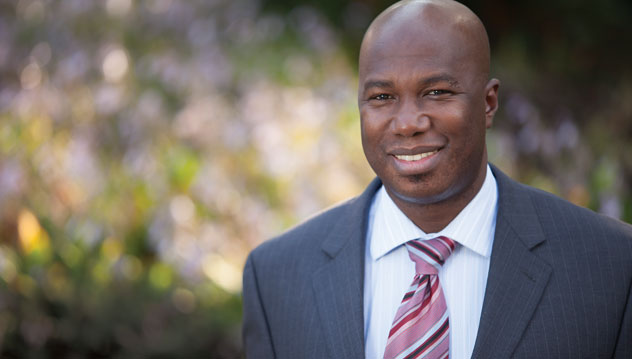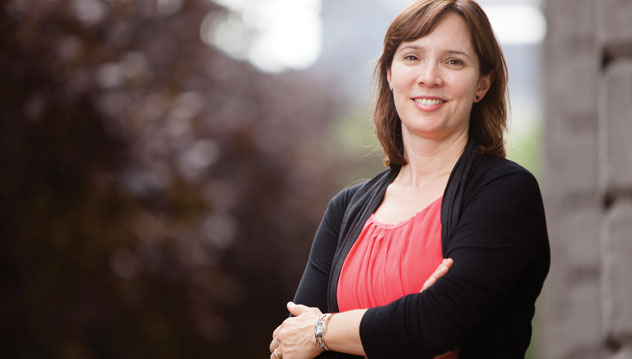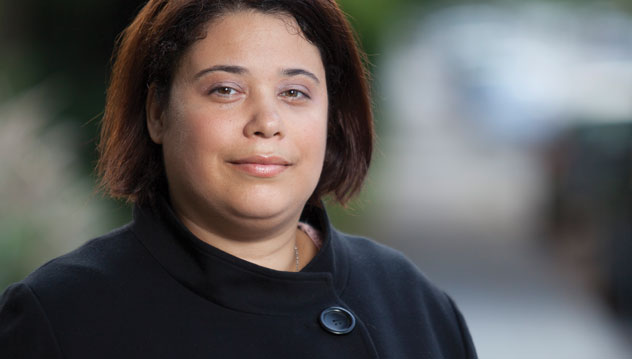Visible minorities are currently underrepresented in the legal profession in Quebec, but times are changing
Pie IX Boulevard and Bélair Street in Montreal’s east-end neighbourhood of Saint-Michel is a low-lying intersection and an up-and-coming immigrant corridor that represents a new, modern and mixed facet of the city: a Baptist church, a pan-Asian resto-bar with a tacky, temple facade, a Tim Hortons and a dépanneur. Headquartered at this crossroads in a two-story walk up, the partners at Bernard & Landry Avocats are part of a new and growing segment of private practice lawyers spreading across Montreal.
“I always wanted to open my own office, and to have a very social practice centred on people – to make a difference in society at that level,” says Nathalie Landry, a lawyer who graduated in law from the University of Ottawa in 2001. She also recently completed a graduate degree in Alternative Dispute Resolution from the Université de Sherbrooke in 2012 and is the secretary of the Association des Avocat(e)s et Notaires Noir(e)s du Québec (AANNQ).
While the demographics of the city’s biggest law firms in downtown Montreal’s monolithic glass skyscrapers remain largely unchanged since the Mad Men era, today, influenced by their opportunities out of law school, many new visible minority and women lawyers are looking elsewhere. They are charging to the front lines of citizenship, family and small-business law, opening independent practices and helping the communities they are from.
While some of the larger law firms and the government sector actively encourage diversity and equal opportunity initiatives, as a whole the legal profession seems to be moving forward slowly, even reluctantly, despite the business case for diversifying a law firm’s personnel.
Statistical briefing
“In every large firm, there are always one or two people of colour just to show they care about diversity, but immigrants work alone or in small firms more often than the vast majority of lawyers,” says Andy Bernard Eustache, an attorney-mediator who was born and raised in Cap-Haïtien, Haiti, and settled in Canada in 1994.
Eustache, who graduated from the University of Ottawa’s law school in 2001, founded his own small firm in 2005 after struggling to find an internship, then a job, in an established firm. Soon after starting up, he brought on Landry as an associate.
Research shows a clear disparity between the growing multi-cultural diversity of Quebec’s general population and that of the legal profession. Approximately 1,500, or 6%, of the Québec Bar’s 24,000 members self-identify as being from a visible minority, while according to the 2006 provincial government’s statistics, 9% of Quebecers identify as being of non-European descent. Of these 1,500 members, three quarters are in Montreal, where statistics indicate 16.5% of the population belongs to a visible minority, and there are a total number of 13,000 lawyers.
”Diversity is the law profession’s next biggest challenge,” says Fanie Pelletier, the Bar’s first equity advisor, appointed in 2006.
Lawyers from ethnic minorities are currently underrepresented in medium and large firms: 14.5% compared to 19.5% for all Quebec lawyers. Statistics also show ethnic minority lawyers are more likely to be practicing in solo or small private practices (20% compared to 13% of all Bar members), and looking for work (3% compared to 1%).

Disclosure
“If you arrive as an immigrant, you don’t know what door to knock on,” explains Eustache. In general, new arrivals find it more difficult to access critical relationships, networks, mentors and champions – the people who can really help them advance their careers.
“If you don’t have a network or family already in the field, it’s harder to enter, or access, the profession. Often, people [from ethnic minorities] move towards immigration law, because it’s their clientele, and the people they know,” he says. “That’s what’s accessible.”
Like many new immigrants to Canada in the past two decades, Eustache was young and educated when he arrived to Quebec. He studied humanities at Cégep de Saint-Jérôme, graduating in 1998. Then, after obtaining his law degree, he completed a degree in Philosophy in 2003, his true passion, at Saint Paul University.
Still, before being admitted to the Québec Bar, Eustache was passed over for an internship. He knew that to meet his long-term goal of opening his own firm, he needed to work in an established practice first. “If you fly a plane without any help, you will crash and die. You need guidance and help to become proficient at anything, especially something that requires technical and professional expertise.”
With a job market that can’t absorb all the new graduates as articling interns, according to Pelletier the Quebec legal profession faces two growing questions: How to create more structured mentorship programs and how to adopt more equal-opportunity recruiting practices for law school graduates.
After being admitted to the bar and still not finding his place in an established firm, Eustache pursued graduate studies in Applied Ethics, at the Université de Sherbrooke, became a radio host and legal columnist, directed cultural events and actively involved himself in Montreal’s Haitian diaspora.
Networking works
“When you start your own practice, it’s like you’re always improvising, every day, until one day when you’re finally established,” he explains of the humbling and occasionally isolating experience of launching his own firm in 2005.
Bernard & Landry now specialize in civil law (which includes familiy law), immigration and real estate. “Our client base is very diversified. It’s representative of the community and Quebec society right now: Families, small- and medium-sized enterprises (SMEs) and new arrivals,” explains Landry.
Me Fanie Pelletier
“The first three to four years, whenever you face a difficulty or have to solve a new problem, humility and professional consciousness oblige you to seek out colleagues for their support, expertise and experience,” says Eustache. It was Landry and Eustache’s involvement in the AANNQ that helped them meet other black lawyers to discuss challenges, exchange tools and come up with new approaches for advancing their careers, and the profession.
Now the AANNQ’s President, Eustache says he sees many young law students and attorneys wait two to three years for internships or jobs, and this worries him. “After your studies, if you stay a year without practicing or being in your books, you lose your knowledge.”

Appeal for equity
Promoting diversity in law firms has two distinct advantages. Given the ever growing numbers of visible minority and women law students, law firms which take greater steps towards affirmative action stand to gain a long-term competitive advantage, being able to hire the best and the brightest of these new graduates.
A highly diverse law firm can build a wider client base too. Having lawyers who share a potential client’s culture could provide the necessary edge to bring in and retain new business for the firm from new sources and professional networks.
Until recently, women have been the focus of most research and equal opportunity initiatives in the profession. Only in the last few years have broader diversity committees sprung up.
In fact, one of the most significant changes in the diversity of the legal profession in the past decade is that women now make up half of the lawyers in Quebec – the most in North America. If you consider members with less than 10 years of practice, this ratio climbs to over 60%, while the numbers of young women currently enrolled in law schools and Bar School continues to rise.
“There are more and more women getting involved from many ethnic origins and we are taking our place,” explains Landry, a native Quebecer, who’s father is Canadian, and mother Haitian. “Once you know you want to make a difference and have things to say, you have to come forward and carry the torch so that people don’t notice markers of difference in future.”
Standing up for diversity
In order to better understand the realities of lawyers from ethnocultural minorities and discuss new models, Pelletier is preparing a general assembly this winter called “Towards an Inclusive Profession.” The one-day forum and interactive plenary session, to be held in Montreal, will gather lawyers, law students, and visible minority associations from all backgrounds and origins to share their experiences and examine the state of the profession.
“Since visible minority lawyers are still few in total numbers, and often work in isolation, the goal is to mobilize these groups and to define the issues, share ideas and set priorities,” says Pelletier. “These are Quebec’s future lawyers, so we want to ask them about challenges and how they want to shape the profession.”
For her part, Landry focuses on what’s already possible, based on her experience to date: “There’s a diverse range of lawyers that have succeeded today in a beautiful, integrated professional community that is taking its place.”
Excerpted from
Les carrières du droit 2013



1 Comment
Comments are closed.